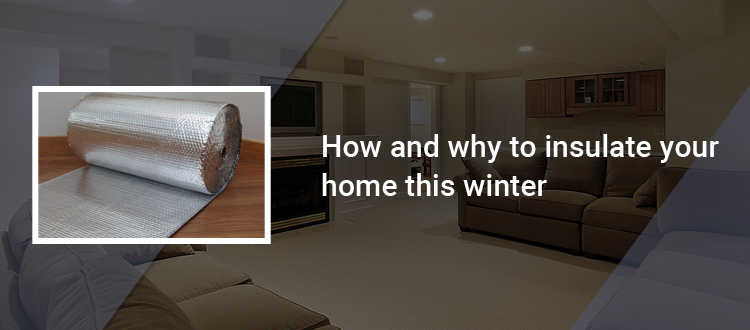How and Why to Insulate your Home this Winter

The winter is knocking at the door, and people at home have started preparing for keeping their home warm and cozy. The traditional approaches that were once popular like open-coal fire, kerosene lamps, and indoor small room heaters are replaced with modern heating appliances and insulation techniques. These techniques are far efficient and effective regarding durability, maintenance cost, and installation cost.
Thermal insulation is being popular among urban society because of its prominent advantage that it reduces energy consumption and provide environment-friendly solutions. In this article, we will learn about the need to insulate your home and the best ways to insulate your homes to prevent heat escape.
What is the Need to Insulate your Home?
Insulation creates a protective barrier around the homes that prevent the heat transfer from the outer space into the inner space of the house. The thermal insulation on the wall, over the roof and beneath the floor, helps to reduce the amount of heat loss during winter and keeps heat out of the house in the warm days.
Thus, thermal insulation takes the place of Air Conditioners in summers and Heaters in winters. Leading to a subsequent cost-cutting in the utility bills and saving a considerable amount of energy that is put in maintaining the desired temperature in winters and summers.
How to Keep your Home Warm?
To maximize the effect of thermal insulation, we need to analyze the condition of the house, R-value and the types of thermal insulation materials. Depending on the requirements, you can implement any of these two insulation techniques; roof insulation and wall insulation. Furthermore, a combination of these insulations can maximize the insulation effect.
-
Roof Insulation
The most vulnerable area of your house from where there is a high probability of heat transfer is the roof. Around 25% of the heat is lost through the roof and thus, applying roof insulation is the primary procedure that you should implement in your house. To reduce the heat escape, roof insulation materials are used. To enhance the insulation quality, you can also insulate the loft area with either fiberglass or rock wool.
-
Wall Insulation
Homes with two layers of bricks between the outer world and inner rooms creates a cavity and thus known as cavity walls. These cavities are filled with an insulating material to stop heat transfer. Usually, these air gaps are filled with either expanding foams or loosely-packed, air-filled materials such as recycled papers, vermiculite or fiberglass. This type of insulation is also known as cavity-wall insulation.
Types of Thermal Insulation Materials for Winters
Batt and Roll:
These materials consist of fiberglass and are possible insulation material for attic insulation.
Loose Fill:
It can insulate the attic and small crawl spaces as it is a filler. Loose fill is used to fill up the areas that have little traffic.
Spray-Foam:
Spray foam insulation is a wet and expandable liquid that gets dry afterwards. This is an effective way to insulate the areas where you can’t reach or invisible to the naked eyes. It is easy to apply and cost-effective at the same time.
Conclusion
If you start feeling cold in winters inside your houses, then it is the sign that you should go for thermal insulation. Implement the most appropriation heat insulation material to trap the heat inside your houses and make it warm and comfortable. Moreover, you can hire insulation contractors that are professionals and provide diverse thermal insulation services. Remember insulation is the basic need to attain a perfect insulation and reduce energy consumption.





